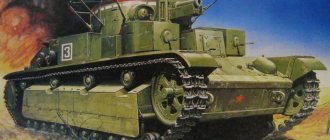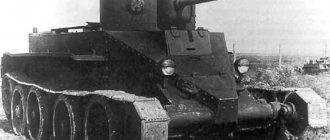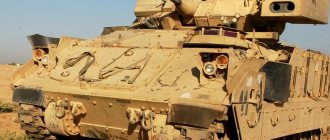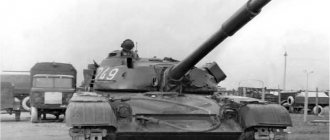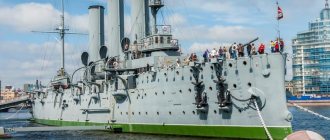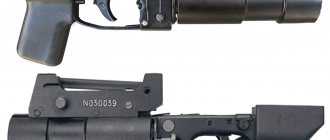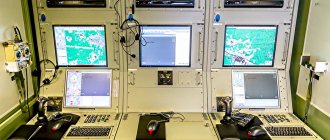Service and combat use of OV-10 Bronco turboprop attack aircraft after the end of the Vietnam War
The very successful use of the OV-10A Bronco in Southeast Asia has fueled interest in this turboprop attack aircraft from countries that have problems with various kinds of insurgents.
Simultaneously with the sale of the basic version of the Bronco, which was used in Vietnam, export modifications were created for foreign buyers to meet specific customer requirements. However, sometimes Broncos were not purchased to fight partisans. The Luftwaffe operated twenty-four OV-10As. In West Germany, these aircraft were part of the 601st Tactical Airlift Wing, and their main tasks were reconnaissance and targeting of supersonic fighter-bombers. At the same time, German pilots practiced striking ground targets and fighting helicopters. After a sufficient number of two-seat Alpha Jet attack jets were built in Germany, the OV-10A turboprops were converted into aerial target tugs, which after conversion received the designation OV-10B.
German target tugs had an additional glass cabin at the rear of the fuselage. Currently, these aircraft have been withdrawn from service, purchased by private individuals and regularly participate in various air shows.
If in Germany two-seat turboprop attack aircraft made only training flights, then in other countries they had to fight. In the early 1970s, the Royal Thai Air Force received 32 new OV-10Cs. This model differed from the OV-10A in its cabin equipment and a number of changes aimed at reducing operating costs. The main characteristics and armament of the aircraft remained the same as on the OV-10A.
Thai Air Force OV-10C
Thai Broncos were used to patrol the border with Cambodia and repeatedly attacked Vietnamese troops pursuing Khmer Rouge troops in Thailand. It is reported that several aircraft were shot down and damaged by fire from anti-aircraft machine guns and Strela-2M MANPADS. With the help of the OV-10C, Thai authorities tried to combat illegal opium production in the Golden Triangle area, located in a mountainous area at the junction of the borders of Thailand, Myanmar and Laos. “Broncos” not only bombed and shelled facilities where drug raw materials and finished products were processed and stored, but also in a number of cases intercepted planes on which drugs were transported. In 2004, eight of the least worn-out Thai OV-10Cs were transferred to the Philippines; the surviving 11 aircraft were decommissioned in 2011.
In the mid-1970s, Venezuela bought 10 overhauled OV-10As, and after some time they were supplemented by 16 new OV-10Es. It is not known whether the Venezuelan Broncos were used for their intended purpose (to fight guerrillas), but they were actively involved in the attempted military coup.
Venezuelan Air Force OV-10A
In February 1992, during another rebellion, one of the organizers of which was Colonel Hugo Chavez, the OV-10A/E of the putschists, together with light attack aircraft EMB 312 Tucano and T-2D Buckeye, attacked the presidential palace, the Foreign Ministry building and the army barracks of the units remaining loyal to the president. In several passes, the rebel pilots fired at ground targets with 70-mm NARs and dropped 113 kg of bombs. At the same time, one Bronco was shot down by fire from 12.7-mm quad M45 Quadmount anti-aircraft machine gun mounts, the crew ejected and were captured. Several more attack aircraft were damaged. On the same day, F-16A pilot Lieutenant Vielma shot down two OV-10Es. Despite the obvious threat in the air, the turboprop attack aircraft continued their work. However, danger lay in wait for them almost everywhere: another OV-10E was damaged by heavy machine gun fire. One engine stalled, but the crew decided to land the attack aircraft on the other. It seemed that luck was already close, but 300 meters before the runway the second engine also failed, and the two pilots had no choice but to eject. Another Bronco was hit by a Roland air defense missile. The pilot released the landing gear and began to move away from the city, trying to put out the fire. Despite the efforts of the pilot, it was not possible to land the attack aircraft; it crashed directly onto the runway of the Baracuiscimento airbase. After the failure of the coup, several rebel planes flew to Peru, but they were later returned to Venezuela.
Currently, the Air Force of the Bolivarian Republic has four OV-10Es. These aircraft from the 15th Special Operations Air Group are stationed at Maracaibo Air Base, near the Colombian border. In the past, they were planned to be replaced by Brazilian-made A-29A Super Tucano turboprop attack aircraft. However, the deal fell through due to US opposition.
The OV-10F attack aircraft was created especially for Indonesia in 1975. In total, this country bought 12 cars of this modification. The most noticeable difference from the OV-10A was the more powerful built-in weapons. Instead of 7.62 mm machine guns, 12.7 mm machine guns were installed on the OV-10F.
Indonesian Air Force OV-10F in the air
In 1977, these aircraft were stationed at Lanud Abdulrahman Saleh Air Base in Malang. Malaysian Broncos played an important role during the invasion of East Timor. At the same time, missile and bomb attacks were carried out not only on the positions of the armed East Timorese formations FALINTIL, but also on villages with civilians.
OV-10F on display at the Indonesian Air Force Museum
OV-10F service continued until 2015, after which they were replaced by the A-29A Super Tucano. Before being decommissioned, two Indonesian Broncos crashed in flight accidents. Currently, one turboprop attack aircraft is an exhibit at the Indonesian Air Force Museum in Jakarta.
In 1981, six used OV-10As entered service with the Royal Moroccan Air Force. These aircraft underwent refurbishment and were based at the dual-use airport of Marrakech Menara.
OV-10A Moroccan Air Force
It was assumed that the turboprop attack aircraft would be used against POLISARIO units in Western Sahara. In total, it was planned to purchase 24 Broncos for this purpose. Two-seat turboprop aircraft performed well during operations against transport convoys at night. But such raids were quite risky. Thanks to generous financial and technical support from Algeria and Libya, the POLISARIO front had at its disposal modern air defense systems: 12.7- and 14.5-mm anti-aircraft machine guns, 23-mm twin anti-aircraft guns, Strela-2M MANPADS, mobile anti-aircraft missile systems "Osa-AKM" and "Kvadrat". The victims of these modern air defense systems by the standards of the 1970s-1980s were several Fouga Magister combat training aircraft, Mirage F-1 and F-5A/E fighters.
Shortly after the turboprop attack aircraft made several sorties, one aircraft was shot down by anti-aircraft fire. After this incident, the Broncos tried not to be used for daytime strikes and were reoriented to conducting reconnaissance and patrolling barriers built by the Moroccan military in the desert. All Moroccan Air Force OV-10As were retired at the beginning of the 21st century.
In the late 1980s, the Philippine Air Force was forced to part with its extremely worn-out AT-28D Trojan piston-powered counterinsurgency attack aircraft. These aircraft were actively used against leftist and Islamic rebels, and also fought against piracy. In 1991, Manila received 24 OV-10A, previously stored at Davis Montan. The Broncos were used very intensively, and in the mid-1990s, 9 more turboprop attack aircraft arrived in the Philippines. In 2004, Thailand transferred eight OV-10Cs to replace expired vehicles. In 2009, nine OV-10A/Cs were overhauled.
Philippine Air Force OV-10C
According to Philippine Air Force representatives, the OV-10A/C attack aircraft are primarily designed to provide close air support to ground and naval forces, conduct tactical air reconnaissance, conduct missile and bomb attacks on enemy targets and ensure the deployment of combat-ready forces in areas of operation. at the request of higher headquarters. However, in fact, the Philippine Broncos were engaged in the fight against various kinds of rebel groups, suppressing illegal shipping and piracy in territorial waters.
At the beginning of the 21st century, all OV-10A/Cs were consolidated into the 16th Strike Squadron Attack Eagles. The Attack Eagles are based at the Danilo Atienza air base near Manila and Lumbia in the province of Misamis Oriental.
Google Earth satellite image: OV-10A/C at Danilo Atienza Air Base
In 2000, Broncos played a critical role in the campaign to defeat Moro National Liberation Front (MNLF) camps in central Mindanao and in the pursuit of the Abu Sayyaf terrorist group in western Mindanao.
Upgraded Philippine Air Force OV-10C
To extend their service life and increase their combat potential, some of the Philippine Broncos went through a modernization program involving refurbishment. The aircraft received Pratt & Whitney Canada PT6A-67 engines with a power of 1020 hp. with four-blade propellers and new avionics.
Two counter-insurgency aircraft were adapted to use the American Raytheon Enchanced Paveway series UAB with a laser guidance system. In 2011, 22 sets of such UAB were transferred to the Philippines under an assistance program.
In early February 2012, guided bombs were used to strike an Islamic militant camp on the island of Jolo. The last combat use of Broncos in the Philippines was recorded in June 2022, when Attack Eagles bombed positions of Islamist militants in the vicinity of the city of Marawi, in the north of the country.
Philippine Air Force OV-10A before a combat mission
According to official data, during its entire service, not a single Philippine Bronco was lost to enemy fire. However, two planes crashed in flight accidents. The exact number of operational Broncos available in the Philippines is unknown. A number of experts believe that 4-5 aircraft can take to the air to carry out a combat mission, although 9 aircraft are in service. Stormtroopers chained to the ground are most likely used as a source of spare parts. In 2022, the issue of transferring several modernized OV-10G+ combat aircraft was discussed with the United States. Vehicles of this type were successfully used in Iraq against Islamists. However, the Philippine Air Force command chose to purchase the new A-29A Super Tucano.
In 1991, the United States delivered 24 OV-10As to Colombia, and three more vehicles transferred in the mid-1990s were used as a source of spare parts. There are almost no details about the service of Colombian Broncos in open sources. Turboprop attack aircraft provided close air support to army units during operations against the armed forces of the Revolutionary Armed Forces of Colombia (FARC) and the National Liberation Army (ELN), and were also used to suppress drug trafficking. During their heyday in the 1990s, the FARC and ELN controlled about 45% of the country's territory.
Colombian Air Force OV-10A
Subsequently, several OV-10As were upgraded to the OV-10D standard. One aircraft was lost in battle, and several more were seriously damaged. In November 2015, after 24 years of service, the Colombian Air Force retired all remaining OV-10 aircraft. Now their functions are assigned to the Brazilian-made A-29A Super Tucano turboprop attack aircraft.
In the late 1980s and early 1990s, American special forces were involved in operations to combat the production and distribution of cocaine in Central and South America. At the same time, they were provided with air support by combat squadrons of the US Air Force. It is reliably known that American Broncos were stationed at air bases in Colombia and Honduras.
OV-10A light attack aircraft from the 27th Tactical Support Squadron of the US Air Force in Honduran airspace, May 1988
In the United States, in addition to military use, approximately two dozen disarmed Broncos were transferred to firefighting aircraft. In most cases, the OV-10A, painted in red and white, corrects the release of fire-extinguishing liquid from heavy aircraft and searches for fires.
Several machines were used by NASA in a research program to study the propagation of noise during low-altitude flight and the effects of turbulence on aircraft control at minimum airspeed. One Bronco remained in service at NASA Langley AFB in 2009.
Taking into account the fact that the OV-10A, more than two decades after the start of mass production, no longer fully met the requirements, the question arose about modernizing the aircraft. First of all, it was about expanding reconnaissance and search capabilities. Certain developments for this were completed shortly before the withdrawal of American troops from Southeast Asia. In 1972, two converted turboprop attack aircraft, transferred to the USMC VMO-2 squadron, underwent combat testing in the Da Nang area. Aircraft equipped with an infrared vision system and a laser rangefinder-target designator conducted a night hunt for trucks on the Ho Chi Minh Trail. Although the sighting and surveillance equipment did not always work reliably, the experiment was considered successful. However, due to the end of hostilities, the North American management's hopes for a large military order did not materialize.
In the early 1970s, an attempt was made to sell the Bronco with night search engines to South Korea. This country experienced difficulties in intercepting North Korean An-2s, which were carrying saboteurs. Low-speed piston biplanes flying at low altitude at night were not detected by ground-based radars along mountain valleys. The South Korean military was interested in the Bronco, equipped with an infrared system and capable of intercepting light aircraft at night and fighting helicopters. An order was issued for 24 aircraft, but then it was cancelled. Instead of turboprop attack aircraft, the Republic of Korea purchased AH-1 Cobra helicopters, and began to solve the problem of detecting low-altitude air targets by deploying radar posts on the tops of mountain ranges.
A number of sources say that in 1978, the USMC acquired 24 modernized Broncos. There is a high probability that these were aircraft that the Republic of Korea abandoned.
OV-10D
The modernized OV-10D attack aircraft differed from the earlier modification OV-10A in the composition of its avionics, engines, weapons and elongated nose. The aircraft was equipped with Garret T76-G-420/421 engines with a power of 1040 hp. In addition to the already mentioned night IR system and laser rangefinder-target designator, a radar warning station and equipment for shooting thermal traps and dipole reflectors appeared on board. Laser illumination of the target made it possible to use guided aircraft munitions.
On some aircraft, a turret with a three-barreled 20-mm M-197 cannon was mounted at the bottom of the fuselage. The OV-10D attack aircraft entered service with the VMO-2 squadron and the Marine Corps reserve squadron VMO-4. In 1985, the takeoff and landing of turboprop OV-10Ds from the aircraft carrier Saratoga was practiced. In the future, the option of basing the Bronco on amphibious helicopter carriers was considered, but these plans did not come to fruition.
Broncos took part in Operation Desert Storm in January-February 1991 as forward-targeting aircraft. During the campaign, Iraqi air defenses shot down two vehicles.
Although the US Department of Defense in the 1990s actively got rid of aircraft from the Vietnam War and the US Air Force removed the Bronco from service in 1991, turboprop attack aircraft, albeit in small numbers, remained in the Marine Corps aviation until 1995, after which they transferred for storage. But, apparently, several attack aircraft have been preserved in flying condition in the combat training centers of the US Navy and USMC.
Google Earth satellite image: OV-10 Bronco at Fallon AFB
Despite its advanced age, attempts were made from time to time to “reanimate” the Bronco, since the need for aircraft for such purposes is very noticeable. In the late 1990s, several attack aircraft were upgraded to the OV-10D+ level. Pointer instruments were replaced with modern avionics, and the crew now had new communication and satellite navigation systems at their disposal. The fuselage and wing were reinforced.
Launch of NAR with OV-10D+
In 2009, Boeing introduced the OV-10X combat aircraft, which retained the Bronco airframe, but installed new engines, modern avionics, and included high-precision weapons in its armament. As part of the Combat Dragon II program, the attack aircraft received a “glass cockpit”, an encrypted radio communication system and tactical Link-16 data links, as well as an additional fuel tank. The MX-15HD FLIR optoelectronic multichannel station, which is capable of detecting and tracking targets in the daytime and at night, was placed in the bow. In addition to the OEMS, pilots use the new Scorpion helmet-mounted night vision systems. The cost of modernizing the two aircraft was $20 million.
The new OV-10G+ fire control system allows the crew to use small-caliber missiles with a laser guidance system, which replaced unguided 70-mm unguided missiles, and the ammunition also includes AGM-114 Hellfire ATGMs. With regard to small-caliber aircraft ammunition, it is known that the OV-10G+ can accommodate up to 38 such missiles - 19 in each launcher. To destroy fortified targets - bunkers, command posts buried in the ground and reinforced concrete hangars, Bronco crews can use laser-guided concrete-piercing bombs Paveway II (weight 454 kg) or Paveway IV (weight 227 kg). Since the aircraft's control system contains a GPS global positioning system module, it is possible to use adjustable JDAM-type aerial bombs. The OV-10G+ avionics allows you to process information coming from reconnaissance unmanned aerial vehicles used by MTR units. To protect against heat-seeking anti-aircraft missiles, in addition to IR traps, it is possible to suspend a container with a laser countermeasures system.
According to information published in the media, OV-10G+ turboprop attack aircraft completed 132 combat missions in Iraq in 2015, and in 120 of them successfully hit their intended targets. These combat aircraft were flown by pilots from the US Navy's 6th Air Training Wing. An important fact is that the cost of a flight hour of the modernized Bronco was many times cheaper than other combat aircraft and amounted to approximately $1000. For comparison: one hour of use of the MQ-9A UAV at that time was $4,762, the A-10C attack aircraft was $17,716, and the AC-130U gunship was $45,986.
The largest private operator of OV-10A/D aircraft in the United States is DynCorp International. In the past, the company has provided services to the US military in Bolivia, Bosnia, Somalia, Angola, Haiti, Colombia, Kosovo and Kuwait. DynCorp International specialists trained technical personnel of the Air Forces of Iraq and Afghanistan.
OV-10D at Patrick AFB
Broncos, formerly part of the Marine Corps, are contracted by the US State Department to participate in counter-drug operations and other sensitive missions outside the United States. The planes have civilian registration numbers and, according to the official version, weapons have been removed from them. At the same time, several OV-10Ds retain optoelectronic night vision search systems. Cabin protection is reinforced with additional Kevlar armor. A tank for defoliants, which is used to treat plantations of narcotic plants, can be installed in the cargo compartment. DynCorp International's primary location for the OV-10A/D is Patrick Air Force Base in Florida.
OV-10D+ aircraft from private aviation company Blue Air Training
In March 2022, private aviation company Blue Air Training acquired seven OV-10D +/G aircraft. In addition to the process of training foreign cadets to attack ground targets, Broncos, which have retained weapons components, can be used to perform various missions in third world countries and simulate enemy aircraft during exercises. The Bronco is refurbished at the Chinno Airport facility in California.
Thus, the turboprop attack aircraft, created to counter the Viet Cong more than 50 years ago, still remains in demand. Its combat effectiveness was significantly increased thanks to the introduction of modern sighting and search, navigation and communications systems. New fuel-efficient turboprop engines with increased power have improved flight performance. The use of Kevlar and ceramic armor in combination with jamming equipment made it possible to increase survivability.
Development
In September 1963, the US Air Force, Navy and Army jointly announced a competition to create a multi-purpose LARA (Light Armed Reconnaissance Aircraft) aircraft intended for use in low-intensity guerrilla conflicts. According to the requirements of the competition, the aircraft had to have two engines, a crew of two, a cargo compartment for transporting 1100 kg of cargo, 6 paratroopers or the same number of stretchers, a speed of at least 560 km/h, a take-off run of 240 m (that is, a short take-off run), the ability to take off from unpaved airfields and an aircraft carrier, the ability to install floats to transform into an amphibian. The requirements were sent to 22 US aircraft manufacturing firms. 9 projects were submitted for consideration (by Grumman, Goodyear, Beechcraft, Douglas, General Dynamics/Convair, Helio Aircraft Company, Lockheed, Martin Marietta, North American Aviation). All of them involved the use of turboprop engines. In August 1964, the winner of the competition was named North American (since 1967 - North American/Rockwell International) with its NA-300 project, made according to a rather rare two-beam design. In October, a contract was signed for the production of 7 prototypes. General Dynamics/Convair protested the results of the competition and built its own Model 48 Charger at its own expense. This prototype crashed during flight testing in 1965, leaving the NA-300 without competition.
The new aircraft received the designation OV-10 and the name “Bronco[2]”. The first flight took place on July 16, 1965 (test pilot Ed Gillespie). Subsequently, customers abandoned a number of their demands. Thus, the OV-10 was never used as an ambulance aircraft, as originally planned.
In October 1966, the first order for production aircraft followed. Serial production began in June 1967. In total, 271 aircraft were built for the US armed forces; according to other sources, 356 aircraft.
Serial production of the aircraft was completed in 1976. In the United States, the OV-10 was finally retired from service in 1994. After this, a small number of aircraft remained in private ownership. Civilian Broncos were used by government anti-drug organizations to spray pesticides over drug plantations. The aircraft is still in service in a number of other countries.
Notes
- “North American” // Aviation: Encyclopedia / Ch. ed. G. P. Svishchev. - M.: Great Russian Encyclopedia, 1994. - P. 385. - ISBN 5-85270-086-X.
- ↑ 12
In the literal translation of Amer. English bronco is a wild or semi-wild horse in the western United States. Look:- bronco // New large Russian-English dictionary / Ermolovich D.I., Krasavina T.M.. - “Russian Language-Media”, 2004.
bronco (English). Oxford Dictionaries Online (World English)
. Oxford University Press. Access date: December 30, 2011. Archived February 19, 2012. - Statement of Rear Adm. William E. Sweeney, United States Navy, Special Projects. / Hearings on Military Posture and HR 13456, 89th Congress, 2nd Session. - Washington, DC: US Government Printing Office, 1966. - P. 7921 - 8633 p.
- The total mass of the armor, including the windshield, was 158 kg. Cabin armor elements: front and rear armor (transverse) 9.5 mm thick made of heterogeneous steel DPSA, cabin floor made of aluminum armor 12.7 mm thick. Transverse armor protected against a 7.62 mm armor-piercing bullet at 0° when firing almost point-blank, and against a 12.7 mm armor-piercing bullet at 45° from a distance of 300 m. Longitudinal armor (cabin floor) - from 7.62 mm bullets at 45° from a distance of 300 m. RJ Arnold Survivability Design of Forward Air Control and Light Attack Aircraft. SAE Preprints, 1969, N 690707.
- "Bronco" at the Corner of Heaven
- Joseph A. Personett
- Douglas A-4 Skyhawk: Attack & Close-Support Fighter Bomber. Jim Winchester. Pen and Sword. 2004. P.115
- Vietnam Air Losses, USAF, USN, USMC, Fixed-Wing Aircraft Losses in Southeast Asia 1961–1973 (2001). Chris Hobson. North Branch, Minnesota: Specialty Press. pp.269,270
- 24 February 1991: Four AV-8Bs and one OV-10 FAC(A) were utilized to destroy (1) FO tower, (2) mortar bunkers, (2) T-55 tanks, and (1) infantry bunker… SUMMARY OF ACTION FOR OPERATION DESERT STORM 24 27 FEB 1991
- February 25, 1991: As TOWs made their shift north, the TAC(A) in an OV-10 reported a build up of armored vehicles to the northeast. SUMMARY OF ACTION FOR OPERATION DESERT STORM 24 27 FEB 1991
- Venezuelan Coup Attempt, 1992
- Colombian Broncos
- Cocaine Wars
- Fuerza Aerea Colombiana
- North American OV-10 Bronco Losses & Ejections (unspecified)
(unavailable link). Access date: July 8, 2014. Archived February 10, 2014. - 13-FEB-1988
- 21-DEC-1977
- CNN: The US used aircraft from the Vietnam War against ISIS (unspecified)
(inaccessible link). News Mail.Ru. Retrieved March 11, 2016. Archived March 12, 2016. - OV-10 Bronco // 2016
- 22-MAR-1994
- 01-APR-1997
- 09-OCT-2004
Literature
- Nikolsky M.
Anti-partisan “Bronco”. About American aircraft OV-10A and OV-10D (Russian) // Wings of the Motherland. - M., 1999. - No. 8. - P. 27-30. — ISSN [www.sigla.ru/table.jsp?f=8&t=3&v0=0130-2701&f=1003&t=1&v1=&f=4&t=2&v2=&f=21&t=3&v3=&f=1016&t=3&v4=&f=1016&t=3&v5 =&bf=4&b=&d=0&ys=&ye=&lng=&ft=&mt=&dt=&vol=&pt=&iss=&ps=&pe=&tr=&tro=&cc=UNION&i=1&v=tagged&s=0&ss=0&st=0&i18n=ru&rlf=&psz =20&bs=20&ce=hJfuypee8JzzufeGmImYYIpZKRJeeOeeWGJIZRrRRrdmtdeee88NJJJJpeeefTJ3peKJJ3UWWPtzzzzzzzzzzzzzzzzbzzvzzpy5zzjzzzzzzzzzzzzzzzzzzzzzzzzz zzzzztzzzzzzzbzzzzzzzzzzzzzzzzzzzzzzzzzzzzzzzzzyeyTjkDnyHzTuueKZePz9decyzzLzzzL*.c8.NzrGJJvufeeeeeJheeyzjeeeeJh*peeeeKJJJJJJJJJmjHvOJJJJJJJJfe eeieeeeSJJJJSJJJ3TeIJJJJ3..E.UEAcyhxD.eeeeeeuzzzLJJJJ5.e8JJJheeeeeeeeeeeeyeyeK3JJJJJJJJ*s7defeeeeeeeeeeeeeeeeeeeeeeeeSJJJJJJJZIJJzzz1..6LJJJJJJtJJZ4….EK*&deb ug=false 0130-2701].
Characteristics
Diagram of the OV-10A aircraft.
Flight characteristics of the OV-10A variant:
- Wingspan - 12.19 m
- Length - 12.12 m
- Height - 4.62 m
- Wing area - 27.03 sq. m.
- Empty weight - 3161 kg
- Normal take-off weight - 4494 kg
- Maximum take-off weight - 6552 kg
- Maximum combat load - 1633 kg
- Engines: 2x Garrett T76-G-10 (right) and T76-G-12 (left) (2×715 hp)
- Maximum ground speed (without suspension) - 452 km/h
- Minimum sustained flight speed - 90 km/h
- Maximum rate of climb - 11.8 m/s
- Combat radius (with maximum combat load) - 367 km
- Ferry range - 2298 km
- Service ceiling - 8,550 m
- Run length - 226 m
- Run length - 226 m
- Weapons:
- 4 M60S machine guns (7.62 mm, 4×500 rounds)
- NAR (70 mm, 127 mm)
- bombs Mk.81, Mk.82, Mk.83, Rockeye Mk.20 cluster bombs, napalm tanks
- suspended gun container CBU-2/A (20 mm, 300 rounds) or 3 machine gun containers SUU-11B/A (7.62 mm, 1500 rounds)
- up to 2 UR AIM-9
Organization of production
A notable feature of the aircraft's production was the fact that there were no subcontractors at all in the production chain, there were only equipment suppliers, in addition, almost all production was concentrated in Ohio. The following structures were involved in the development and production of the OV-10 attack aircraft:[3]
General contractor
- Overall aircraft - North American Aviation Inc., Columbus, Ohio.
Suppliers of on-board equipment ordered by the general contractor (CFE)
- Propeller - United Aircraft Corp., Hamilton Standard Division, Windsor Locks, Connecticut;
- Chassis—Cleveland Pneumatic Tool Co., Cleveland, Ohio;
- Wheels, tires, tires, brake system - BF Goodrich Co.[en], Troy, Ohio;
- Starter-Generator - Lear-Siegler, Inc.[en], Cleveland, Ohio.
Suppliers of on-board equipment for government orders (GFE)
- Aircraft engine T76-G-6/8[en] - Garrett Corp.[en], AiResearch Manufacturing Division[en], Phoenix, Arizona.
Options
- YOV-10A - prototype.
- OV-10A is the first and main production modification.
- OV-10B is a target towing aircraft for the German Air Force. 6 cars were produced.
- OV-10B(Z) - target towing aircraft for the German Air Force. 18 cars were produced.
- OV-10C is an export modification for the Thai Air Force. 32 cars were produced.
- OV-10D - modernized OV-10A. A thermal imager, a laser rangefinder-target designator, and a 20-mm cannon under the fuselage are installed. 17 aircraft from previously built ones were converted.
- OV-10D+ - modernized OV-10A.
- OV-10E is an export modification for the Venezuelan Air Force. 16 cars were produced.
- OV-10F is an export modification for the Indonesian Air Force. 16 cars were produced.
- OV-10X - Boeing is offering this model as a promising light attack aircraft for the US Air Force.
OV-10D
The OV-10D is the second generation of Broncos built as part of the Night Surveillance System (NOGS) armed aircraft program. The D version uses a heavily modified OV-10A airframe with a forward-looking infrared night vision system with a rotating camera under an elongated nose (the A model had a short and rounded nose). The D model also had more powerful engines and larger fiberglass propellers. Other external differences from the Model A were that an automatic chaff ejector was installed in the middle of the tail booms and special exhaust pipes were installed to reduce infrared signature (the exhaust gases were mixed with cold air to reduce thermal signature).
OV-10D+
The next modification for the US Marine Corps was the D+ model. During its creation, models A and D were significantly modified at the Marine Corps Air Station Cherry Point. The model received new wiring and reinforced wings. Also, indicators of engine parameters monitoring devices with a circular scale were replaced with digital indicators. The first D+ aircraft was delivered to the Marine Corps in late 1979.
Accidents and disasters
Known cases:
On March 24, 1994, a Thai Air Force OV-10C, taking off from an airfield in Chiang Mai, crashed into a store near the city highway, killing the pilot.[20]
On April 1, 1997, Philippine Air Force OV-10 pilots decided to eject directly over Davao City after experiencing engine problems. A falling plane crashed onto a residential building in which a family was located. The woman was burned to death on the spot, and two other children received minor burns.[21]
On October 9, 2004, the museum's OV-10A Bronco burned down in a fire at the Yankee Air Museum.[22]


